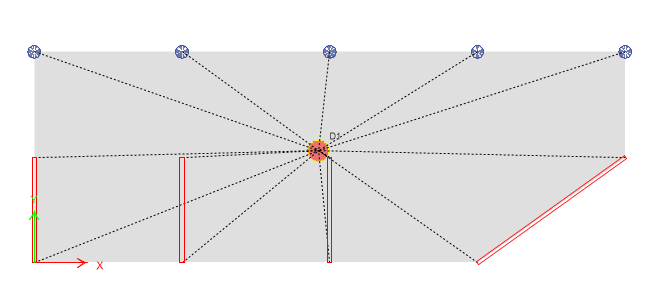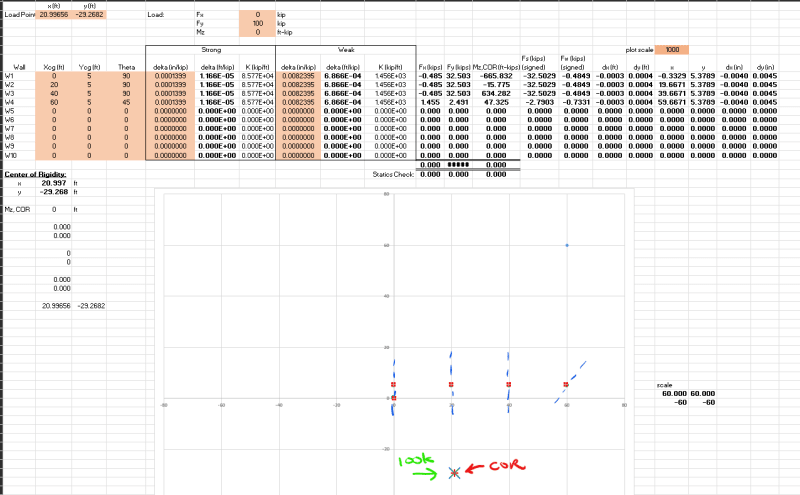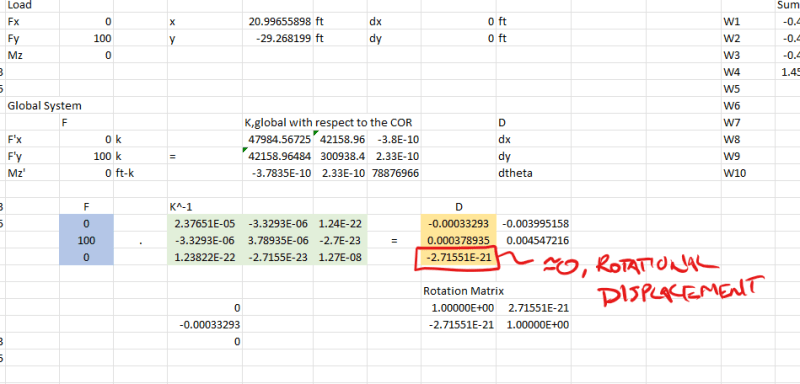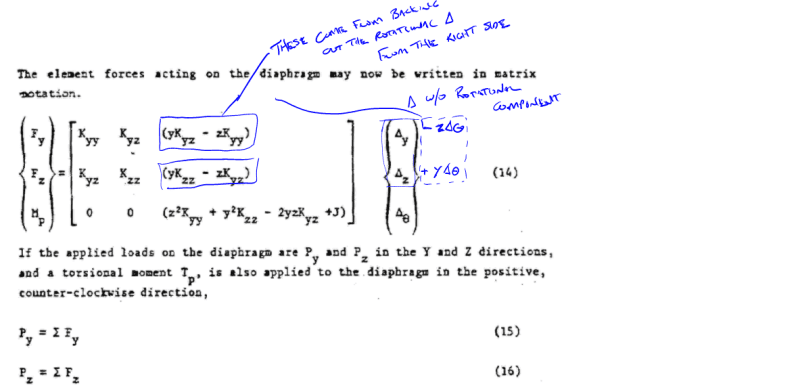Hi guys,
I have a 10m x 28m floor plate that is 200mm thick, supported by four 5m-long walls spaced at 7m intervals. The last wall is oriented at a 45-degree angle to the global X-axis.
I obtained the center of rigidity (COR) values from ETABS, and the negative YCR value is causing confusion. (when I remove the last wall positioned at a 45-degree angle to the global X-axis, the YCR becomes positive, which makes more sense).
Calculating the center of rigidity manually for orthogonal walls doesn't pose any issues for me. However, I'm struggling to determine the COR when dealing with non-orthogonal walls. Although I've used the same approach as I did for orthogonal walls, my calculated YCR is positive, unlike ETABS' results. If anyone could shed light on why this is happening and wouldn't mind sharing how to accurately calculate the COR in this scenario, I would greatly appreciate it.


I have a 10m x 28m floor plate that is 200mm thick, supported by four 5m-long walls spaced at 7m intervals. The last wall is oriented at a 45-degree angle to the global X-axis.
I obtained the center of rigidity (COR) values from ETABS, and the negative YCR value is causing confusion. (when I remove the last wall positioned at a 45-degree angle to the global X-axis, the YCR becomes positive, which makes more sense).
Calculating the center of rigidity manually for orthogonal walls doesn't pose any issues for me. However, I'm struggling to determine the COR when dealing with non-orthogonal walls. Although I've used the same approach as I did for orthogonal walls, my calculated YCR is positive, unlike ETABS' results. If anyone could shed light on why this is happening and wouldn't mind sharing how to accurately calculate the COR in this scenario, I would greatly appreciate it.





